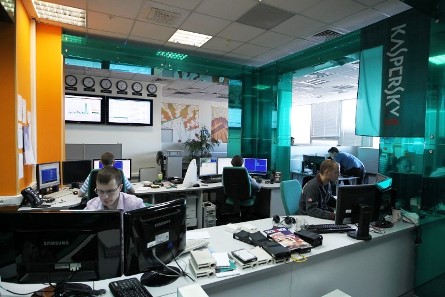During the second half of 2021, almost 40% of all industrial control systems’ (ICS) computers globally were attacked by malicious software at least once. Even though the overall number of attacks has seen a slight decrease when compared to H1 2021, the ICS threat landscape in the second half of the year became highly diversified, with the percentage of ICS computers on which miners were blocked grew by 0.5 percentage points, spyware up 0.7 percentage points and malicious scripts increasingly growing at 1.4 times the rate seen at the beginning of 2020.
According to Kaspersky ICS CERT, the percentage of ICS computers on which malicious objects were blocked in 2021 increased by 1 percentage point from 2020, rising from 38.6% to 39.6%. However, if the situation is examined by each 6-month period, the landscape looks better, with H2 2021, seeing this figure drop by 1.4 percentage points for the first time in one and a half years.
RELATED Kaspersky Shows 44% Of Businesses In META Region Don’t Protect Their Full IoT Suite
Overall, Kaspersky security solutions blocked over 20,000 malware variants during the second half of 2021. Although this figure did not change much compared to the previous six months, a detailed analysis of detected malware shows that the proportion of ICS computers attacked with spyware, malicious scripts and miners grew.

Percentage of ICS computers* on which malicious objects from various categories were blocked
Malicious scripts are rising steadily year over the year. In H2 2021, the percentage of ICS computers attacked by them increased by 1.4 times from the beginning of 2020 and was up by 0.5 percentage points compared to the previous half of 2021. Cybercriminals use malicious scripts to achieve various goals ranging from data collection to loading other malware, such as spyware or cryptocurrency miners.
Significantly, as threat actors use scripts more and more, they are also increasingly using spyware and cryptocurrency miners. The former is mostly used to steal victims’ credentials or money and the percentage of ICS computers attacked with spyware is up by 1.4 percentage points since H1 2020. Spyware continues to grow and is up in use for the third six-month period in a row. The share of ICS computers attacked by miners has more than doubled since H1 2020.
‘Industrial control systems possess sensitive data and are responsible for the functioning of the most important sectors. A low-risk attack for IT infrastructure can still be a significant threat for operational technology (OT). While overall, the threat types that find their way to ICS computers have remained relatively the same, we have seen a constant increase in the share of ICS computers facing malicious scripts and phishing pages, along with Trojans, spyware and miners which would be normally delivered by the malicious scripts. Crypto miners are generally overlooked as a significant threat, which is not a good approach. While the influence of miners on the office network may be insignificant, in the course of their work and distribution, they can lead to the denial of service for some components of the automated control system,’ comments Kirill Kruglov, security expert at Kaspersky.
Read more about the ICS threat landscape in H2 2021 on the Kaspersky ICS CERT website.
To learn more about threats to ICS and industrial enterprises in 2022, check out the ICS threat predictions for 2022.
To keep your ICS computers protected from various threats, Kaspersky experts recommend:
- Regularly updating operating systems and applications’ software that are part of the enterprise’s industrial network. Apply security fixes and patches to ICS network equipment as soon as they are available.
- Conducting regular security assessments of OT systems to identify and eliminate possible vulnerabilities.
- Dedicated ICS security training for IT security teams and OT engineers. This is crucial to improving the response to new and advanced malicious techniques.
- Make sure you protect industrial endpoints as well as corporate ones. Kaspersky Industrial CyberSecurity solution includes dedicated protection for endpoints and network monitoring to reveal any suspicious and potentially malicious activity in industrial networks.





























